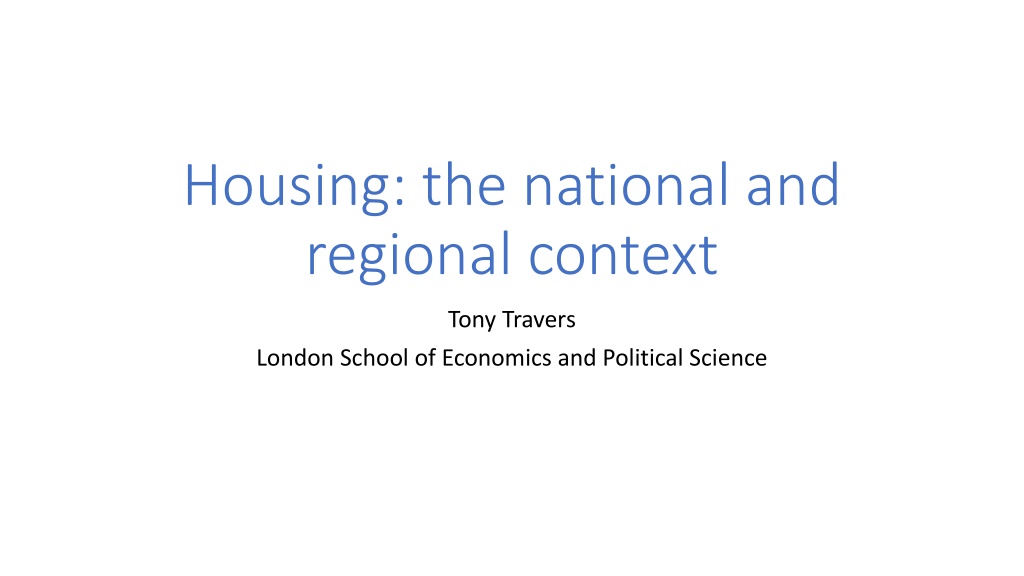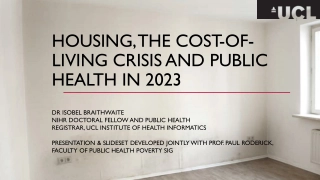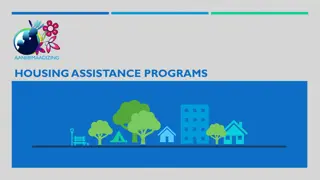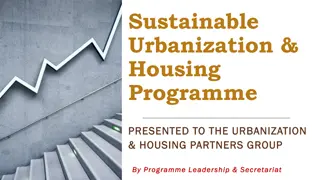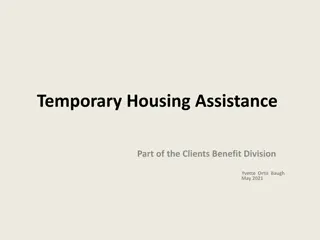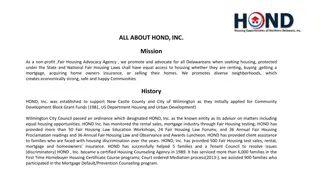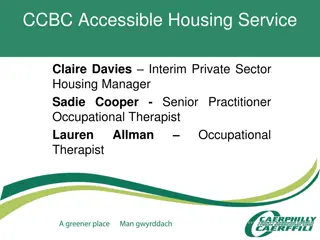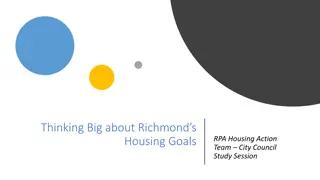Housing:National and Regional Context Explained
This informative content delves into the national and regional context of housing in England, covering topics such as housing supply, new construction trends, challenges affecting house building, the planning system, and public opinion on housing developments. It also discusses key issues like affordability, green belt preservation, rising interest rates, and intergenerational fairness.
Download Presentation

Please find below an Image/Link to download the presentation.
The content on the website is provided AS IS for your information and personal use only. It may not be sold, licensed, or shared on other websites without obtaining consent from the author.If you encounter any issues during the download, it is possible that the publisher has removed the file from their server.
You are allowed to download the files provided on this website for personal or commercial use, subject to the condition that they are used lawfully. All files are the property of their respective owners.
The content on the website is provided AS IS for your information and personal use only. It may not be sold, licensed, or shared on other websites without obtaining consent from the author.
E N D
Presentation Transcript
Housing: the national and regional context Tony Travers London School of Economics and Political Science
Housing need and supply, England Source: House of Commons Library
New build, change of use and conversions Source: House of Commons Library
House building now mostly by the private sector, very different from the post-war period Source: House of Commons Library
Parties commitments in 2019 - a million new homes/social homes over this Parliament/a decade Source: House of Commons Library
Issues affecting house building in England The population is increasing, especially in the wider south east Housing is a way of building up capital where most other ways have become more difficult Affordability (or the lack of it): the paradox of success Green Belt Opposition to development on green land Rising interest rates after a decade + of very low rates Intergenerational fairness Economic competitiveness
The planning system The 1947 Town & Country Planning Act effectively nationalised decisions about land and building use Councils and central government (both elected) now face endless rationing decisions about housing subsidy, new development, heritage and taxation Voters may accept the need for more housing but only in the right places Recent weeks have seen a major struggle between the Government and its own backbenchers about targets New demands (and short term costs) include embedded carbon, energy efficiency and aesthetics Planning decisions about housing are important vote losers/winners
Support vs Oppose a large increase in housing locally - London Net 22% support a large increase in housing locally
Support vs Oppose a large increase in housing locally - South East, East & South West Net 7% oppose a large increase in housing locally
Conclusions Surrey needs more homes New housing needs to be more affordable Not much (apart from political grief) will happen unless local residents broadly assent to development Demand will always exceed supply, so the key issue is how to protect those who currently do not own a home and/or live in place they reasonably like On the bright side, many people are better housed in the UK than in the recent past The politics of housing are both personal and political
Housing: the national and regional context Tony Travers London School of Economics and Political Science
